I have often fallen victim to the gorgeous pictures in seed catalogs, buying packets of heirloom crops I want to try. There are so many new varieties and plants, and it’s a lot of fun watching the new vegetables ripen. Some of them don’t hit the mark, but some become absolute favorites and return to the garden year after year.
Building this list was a lot of fun. Many of these vegetables are dual-purpose plants: some look great in the ornamental landscape, some are super-easy to grow, and some are edible in all parts of the plant. Many are perennials, which means they don’t have to be replanted every year because they keep coming back. I approve of this heartily.
Jump to:
- 1. Yacóns (Smallanthus sonchifolius)
- 2. Roselle (Hibiscus sabdariffa)
- 3. Mâche (Valeriana locusta)
- 4. Chayote (Sicyos edulis)
- 5. Egyptian Walking Onions (Allium×proliferum)
- 6. Winged Beans (Psophocarpus tetragonolobus)
- 7. Cucamelons (Melothria scabra)
- 8. Cardoon (Cynara cardunculus)
- 9. Ground Cherries (Physalis spp.)
- 10. Calabash (Lagenaria siceraria)
- 11. Jerusalem Artichokes (Helianthus tuberosus)
- 12. Skirret (Sium sisarum)
- 13. Bitter Melon (Momordica charantia)
- 14. Salsify (Tragopogon porrifolius)
- 15. Emerald Carpet Creeping Raspberry (Rubus pentalobus)
1. Yacóns (Smallanthus sonchifolius)
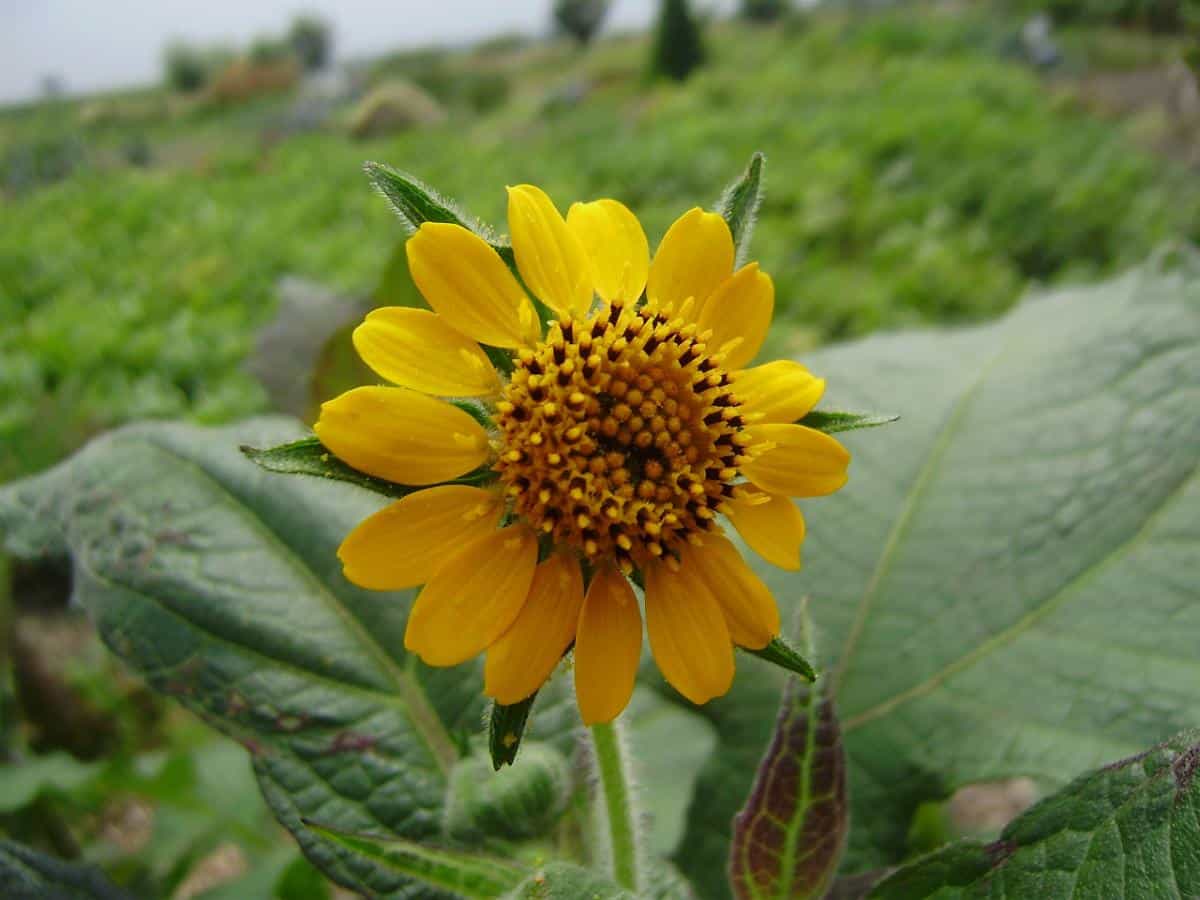
Yacon is a root vegetable native to the Andes that’s sometimes confused with jicama, which is in a whole different plant family. If you take a bite of a peeled slice, you might think it was an Asian pear from its flavor and crunch, but yacons are actually related to sunflowers and Jerusalem artichokes. They’re surprisingly sweet for a root crop, crisp and juicy.
For those in temperate climates with only light freezes, yacons are harvested and dug up from about November/December through April/May. Outside those dates, they taste very good when they’re dried.
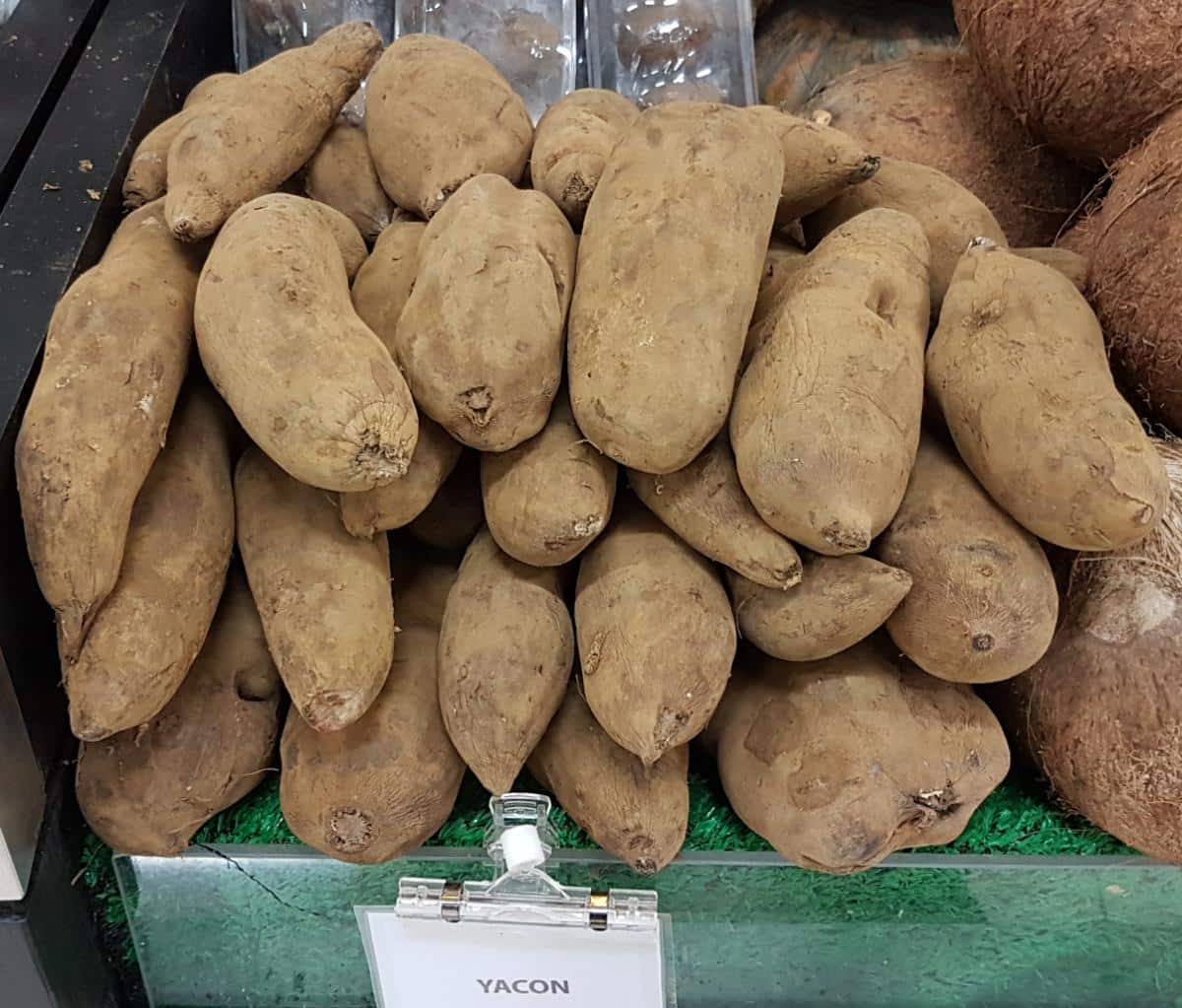
Yacons have gotten some attention for being helpful for people with hypoglycemia and diabetes, allegedly lowering blood glucose levels.
Yacon roots can be grown as perennials in warm climates that get only a few light freezes. In colder climates, wait for a few frosts to make the roots sweeter, then dig up the roots before the ground freezes solid and store them in a cool, dry place. Set aside a few rhizomes to replant next spring. Be sure to plant them two or three feet apart after frost. Some sources have reported good-sized crops within four months.
2. Roselle (Hibiscus sabdariffa)
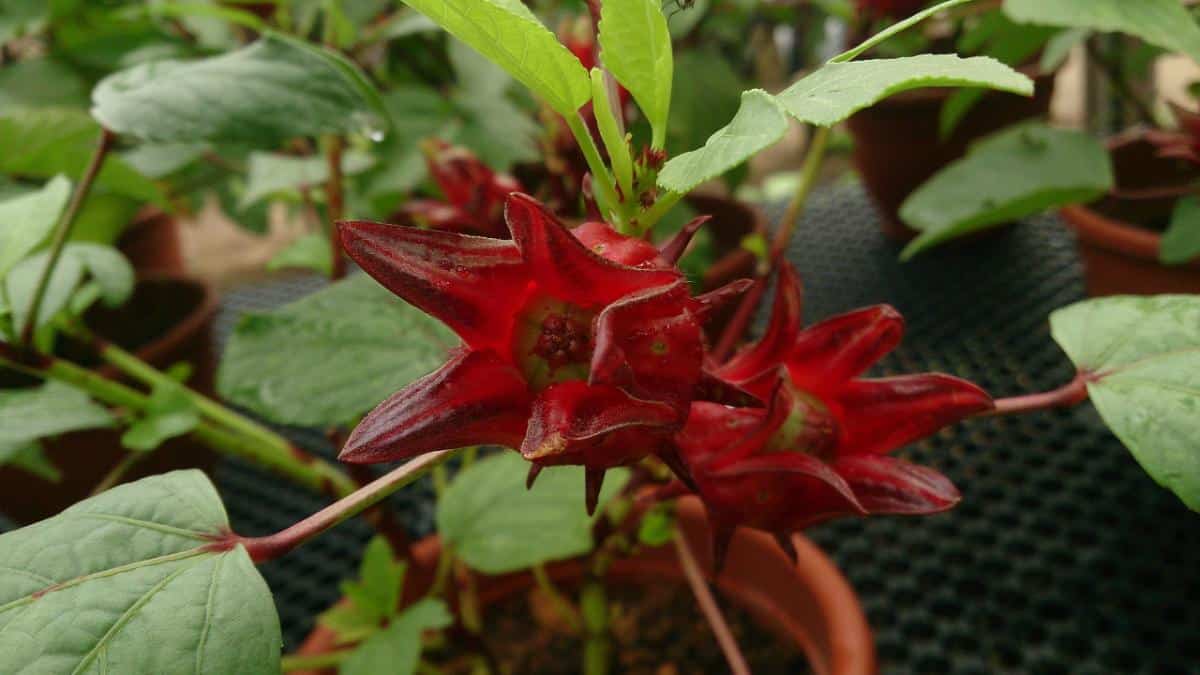
Here’s a plant from the hibiscus family, and the only part that’s eaten is the calyx – that is, the rich red fleshy part that surrounds the seed pod. It tastes like cranberry. The calyx is pulled or cut from the tough stem of the hibiscus plant before it blooms. Then, cut the red calyx off the seed capsule.
Roselle melts down into a sauce in a matter of minutes. It makes a lovely mock cranberry sauce. It can be candied or added to soup, or used to make jam. It makes a bright red herbal drink that’s refreshing when sweetened and is best served cold in the summer.
The young leaves can be eaten raw or added to a salad to give it some zing. The taste is somewhat like sorrel.
3. Mâche (Valeriana locusta)
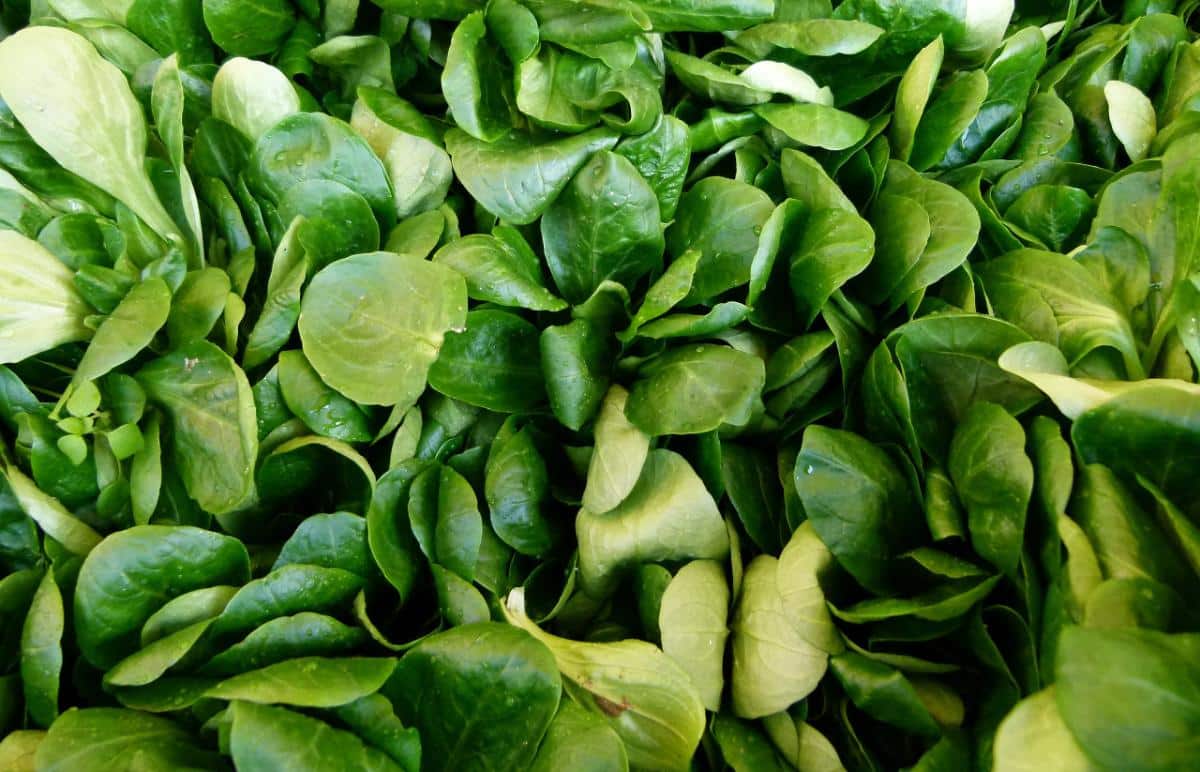
Mache, aka corn salad, is a leafy green that can be planted in fall and picked all winter, even after it snows. It resembles lettuce, but it’s actually in the honeysuckle family. These mild, nutty greens are super-easy to grow and winter hardy.
Mache has been eaten in Europe for centuries, by peasants and lords and constitutional monarchs. It’s a nutrient-rich winter plant that should be gathered before the temperatures warm up and it bolts (i.e. flowers).
Sow seeds in summer to protect them from the sun while they germinate, and water them during dry spells. After the first few frosts, mulch the plants under a layer of straw, and harvest can continue through winter. Reseed in early spring for a second harvest.
4. Chayote (Sicyos edulis)
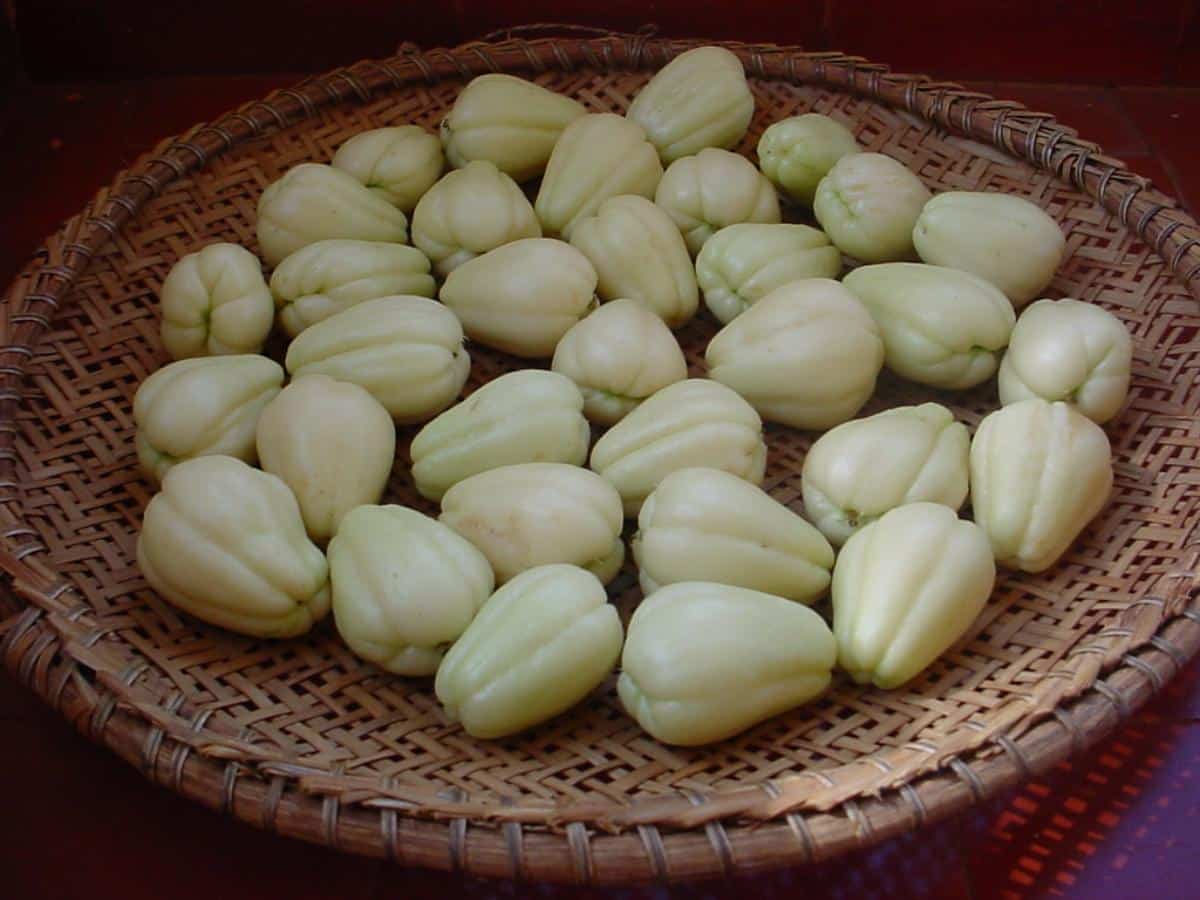
Chayote is a really unusual squash. It’s a bit larger than a pear, grows in various shades of green or cream, have odd wrinkles, and have a central pit instead of seeds. They grow on a vine, and the leaves and tendrils are also edible. Roots can be eaten like potatoes, young shoots and leaves can be enjoyed in salads or stir frys.
The squash are harvested before the first fall frost and can be eaten through the winter. Like summer squash, the chayote can be eaten any number of ways – raw, cooked, baked, fried, steamed, or stuffed.
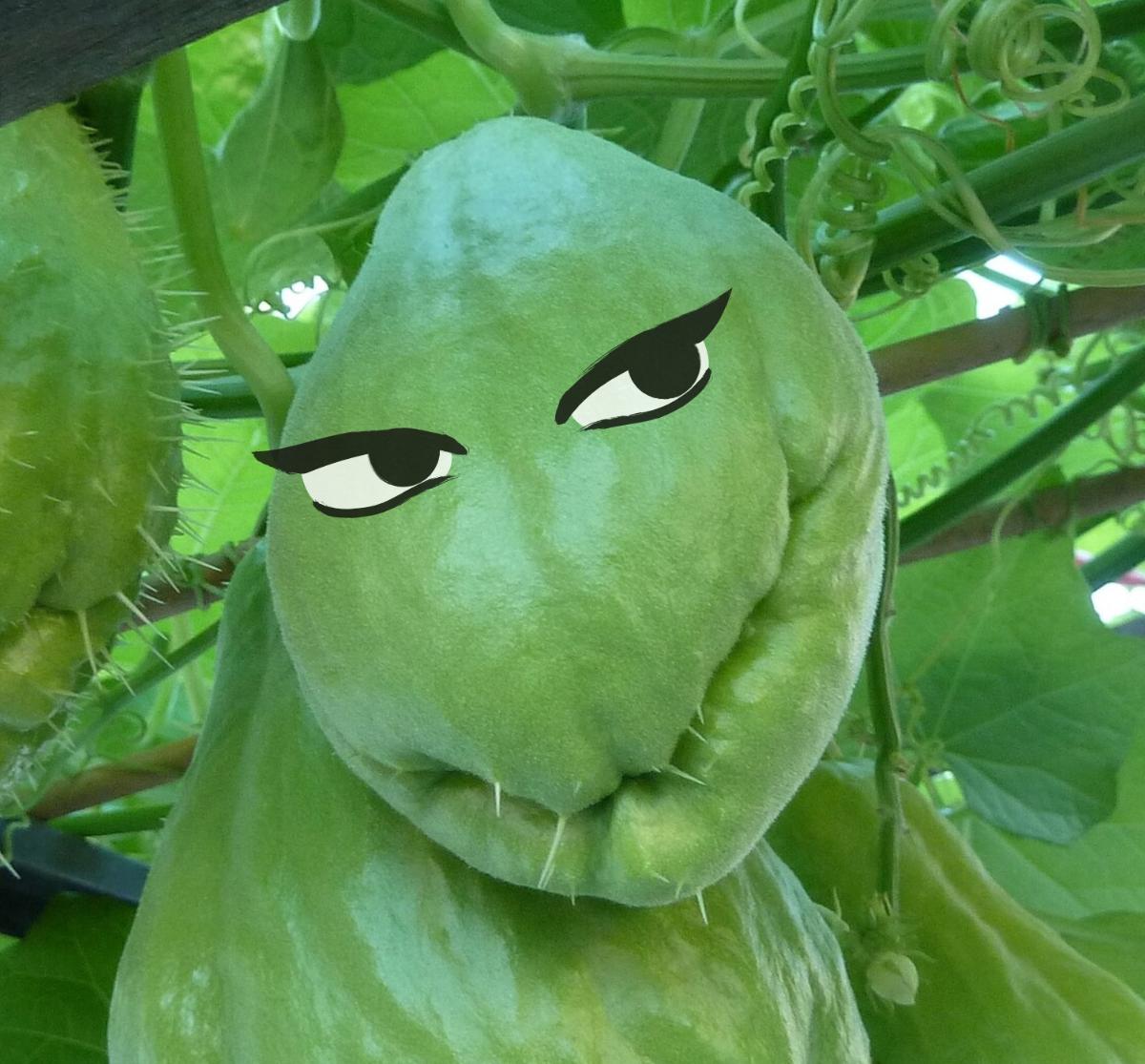
In South Louisiana, chayote is called mirlitons, and they grow very well in many a Cajun garden.
Chayote fruit and squash fruit used as veggies are good, but chayote greens, just like squash greens (used on gumbo, stews, or broths), are even better. One instance in which the leaves are better tasting than the fruit.
Read more gardening advice from Rosefiend Cordell.
5. Egyptian Walking Onions (Allium×proliferum)
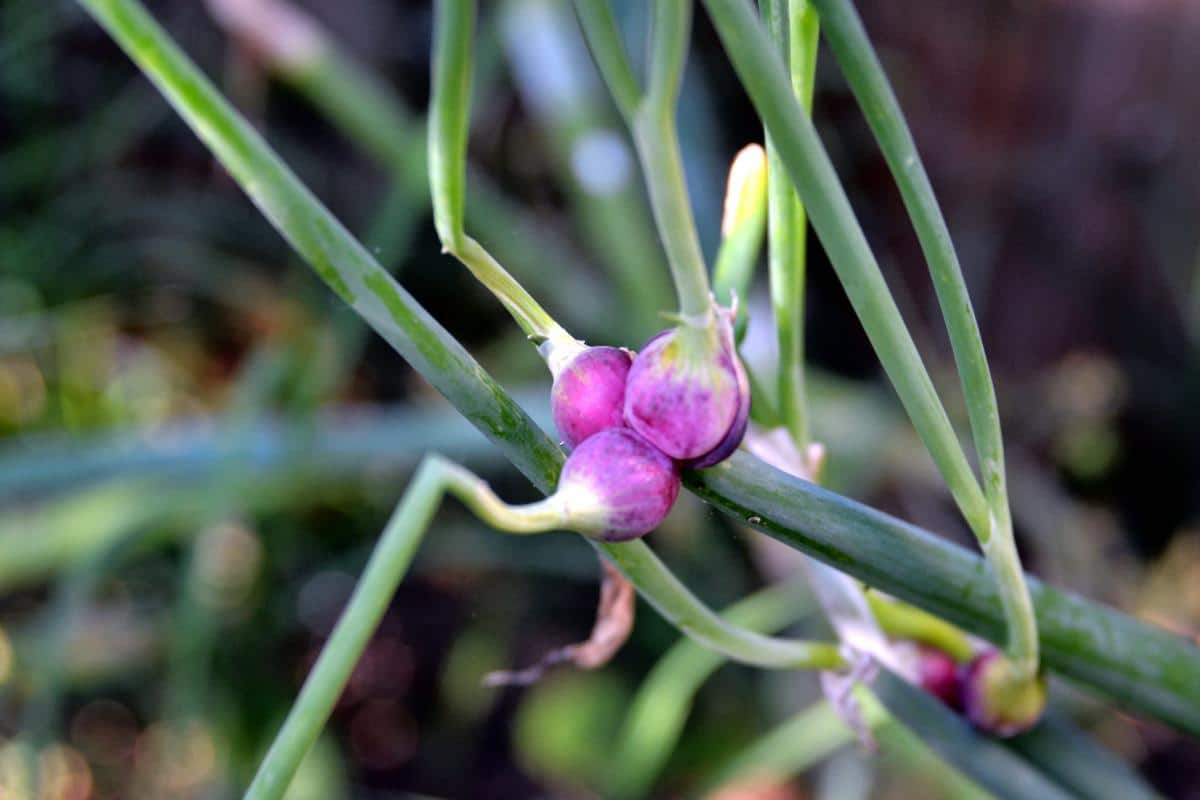
Also called tree onion, walking onion, or turfed stone leek.
These odd little onions start out looking like any other onion. You get a bag of little bulbs, plant them, and up comes a bunch of hollow green shoots that are good to eat and taste like spring onions. They’re cut-and-come-again crops and you can put them in everything: stir fry, baked potato toppings, any Asian dish. Roast the green spring onions by covering them with olive oil, sprinkle on salt, put on a cookie sheet, and bake at 300F until crispy. It’s a lovely way to eat greens.
But if you let the shoot grow, it’ll make bulbs at the top that look like a cluster of shallots. These are also edible. But then the shoot falls over from the bulbs’ weight, and they’ll take root and make new plants.
They’re fun plants that don’t take any work to grow or propagate and are infinitely useful.
6. Winged Beans (Psophocarpus tetragonolobus)
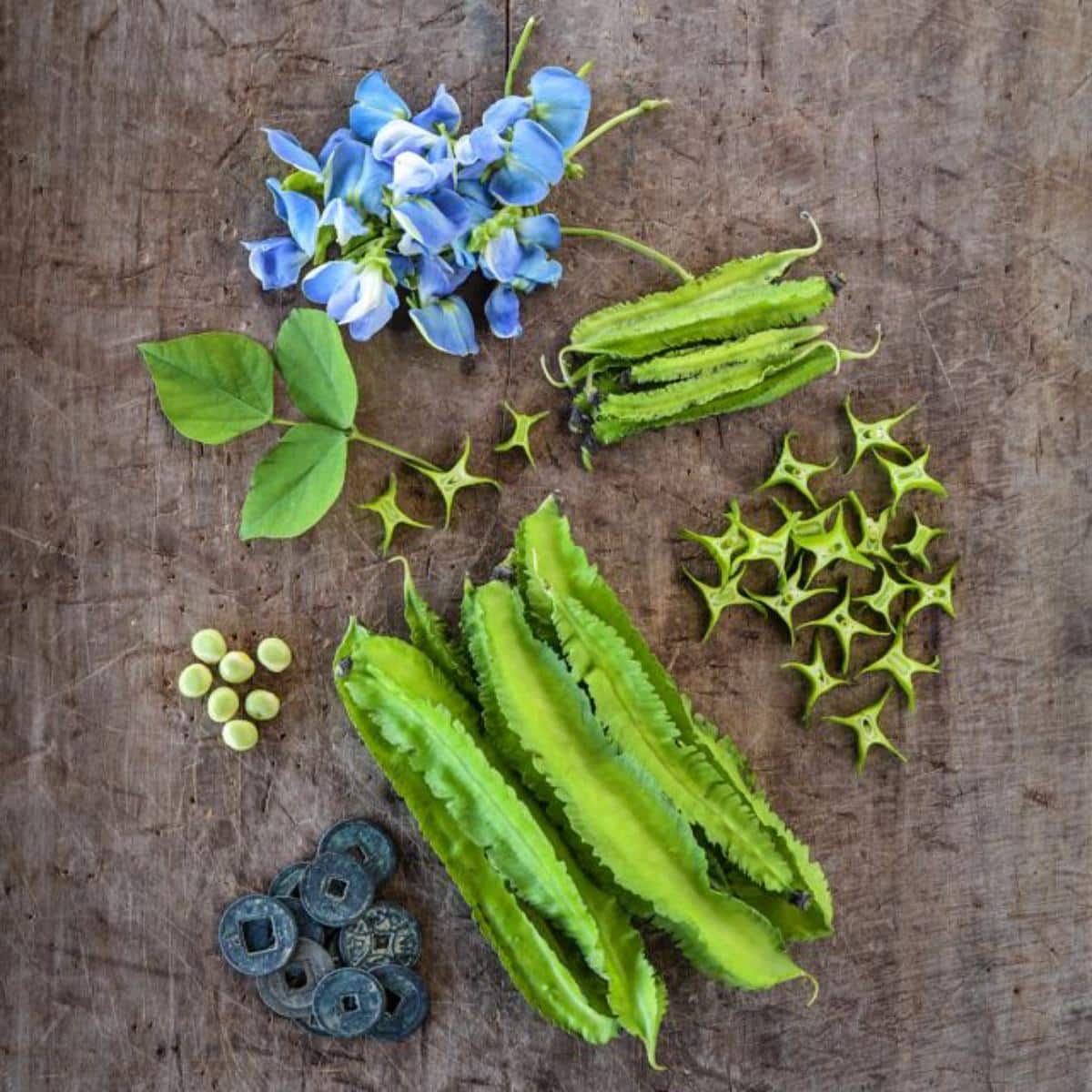
The winged bean is definitely an underutilized plant because it has so many uses. Every part of the winged bean plant is edible, and this nutrient-rich bean contains more protein than most vegetables. The leaves can be eaten like spinach, its tubers or roots can be eaten either raw or cooked, and the young seed pods are tasty. Flowers can be used in salads or to make tea. All parts can be eaten raw or cooked when they’re young and tender. If you find old pods on the beanpole, the mature seeds can be used like soybeans. Eat them roasted, dry them, and make flour, or make them into bean milk, which tastes similar to soy milk.
This pole bean grows about 10 to 13 feet tall. It's a fast grower ,and it flowers anywhere from 40 to 140 days after it’s planted. The roots of the winged bean, like other legumes, fix nitrogen into the soi,l which benefits the bean and other plants. Because of this, it can also be grown as a cover crop. This winged bean is just a good, all-purpose plant.
7. Cucamelons (Melothria scabra)
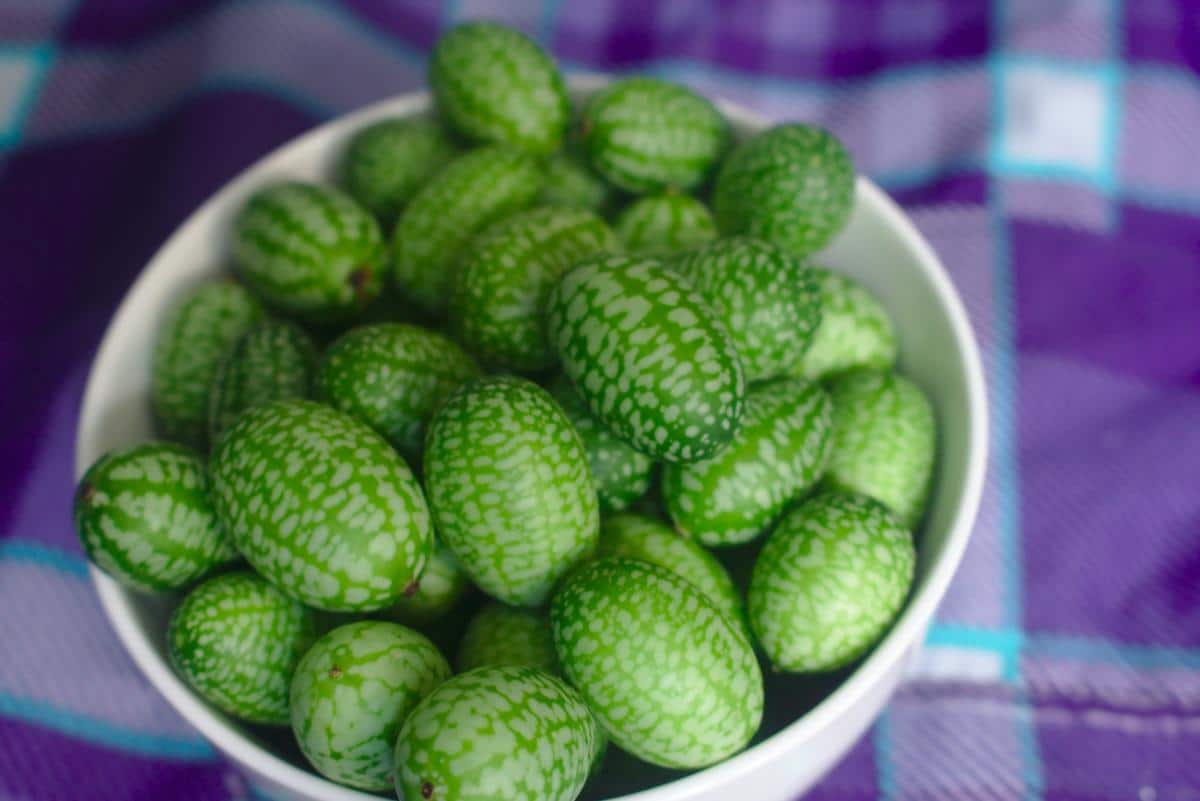
Cucamelons, aka mouse melons, pepquinos, or Mexican sour cucumber, are easy to grow and productive. These are not actually melons – they’re a juicy Mexican gherkin with lots of crunch. Like cucumbers, they can be pickled or eaten raw if you like their tangy, sour/sweet taste. Add to salads or salsa.
Grow the cucamelon vine on a trellis. It will get from 8 to 10 feet tall, and fruit will mature from 60 to 75 days after planting.
8. Cardoon (Cynara cardunculus)
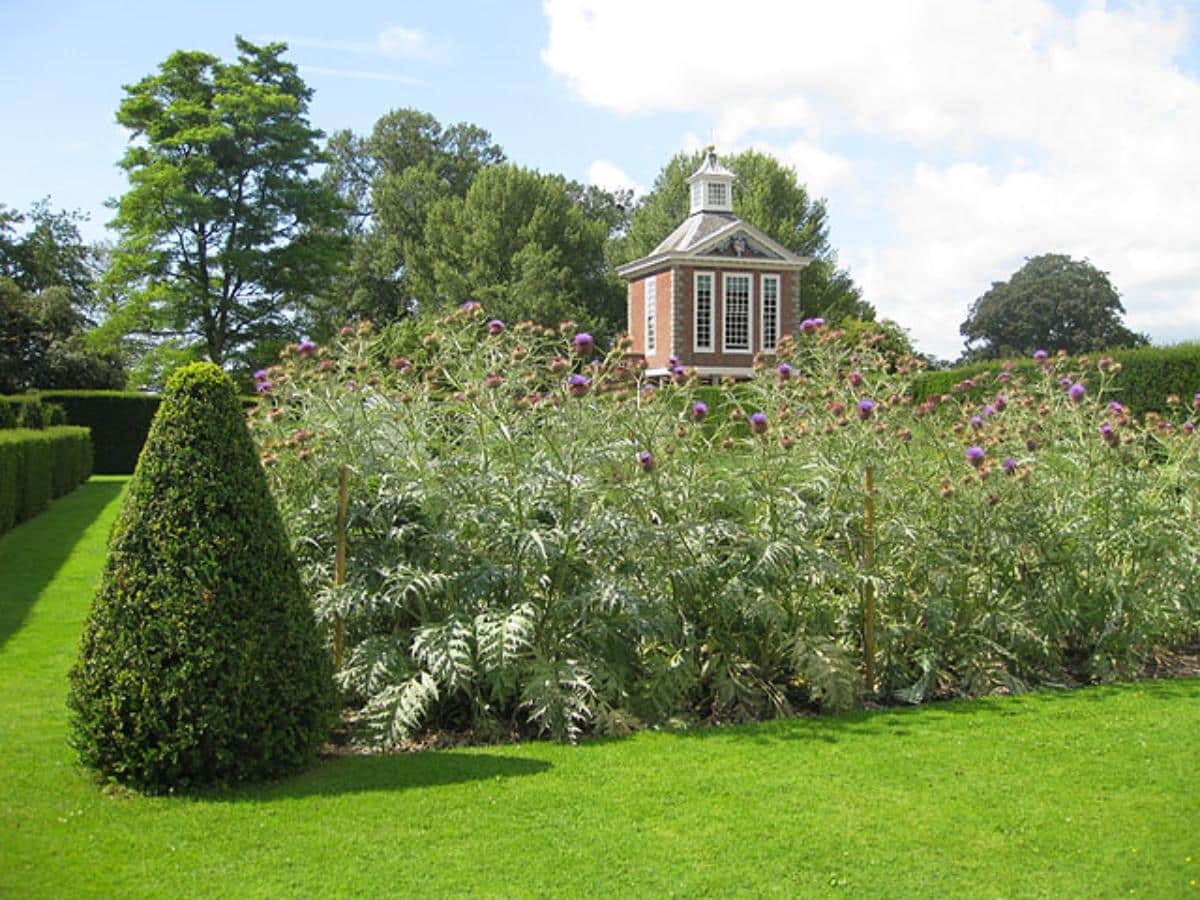
Much like its close relative, the artichoke, cardoons can be grown for their spiny flower buds, which are steamed. However, its stems are also cooked. They’re wrapped in opaque material for several weeks, then harvested. Cardoon leaf stalks resemble celery and are harvested in winter and spring, before the plant flowers.
In winter, store the cardoon plants under straw and harvest as needed, cutting the leaves off at the base of the plant. Wear gloves because the spines will jab you and the cardoon will turn your fingers brown. Cut away the leaves, leaving only the stems, and use a vegetable peeler to cut away the spiky, tough skin, leaving only the pale inner stem. Steam them, or batter and fry them. Cardoons are a staple in Italian and Mediterranean cooking, so there are a billion ways they can be prepared. They taste very much like artichokes.
Read more gardening advice from Rosefiend Cordell.
9. Ground Cherries (Physalis spp.)
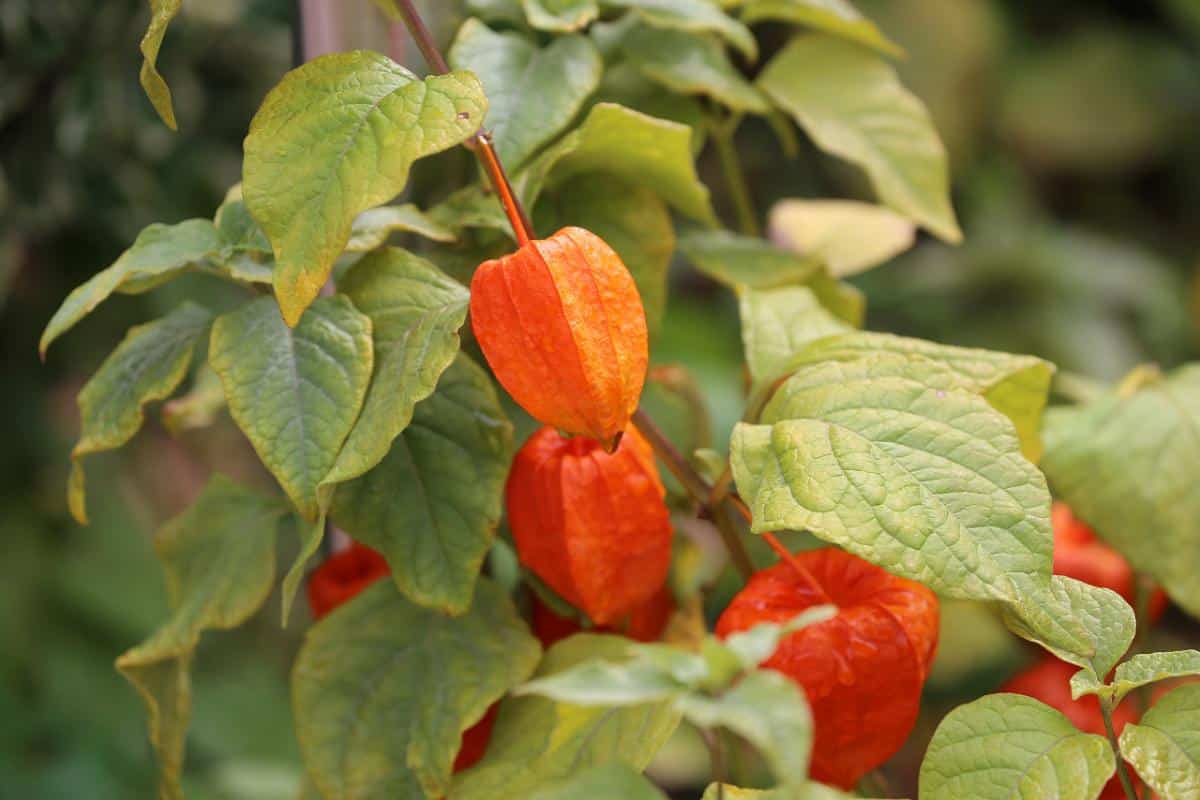
Ground cherries, also known as husk cherries, cape gooseberries, and golden berries, are actually not cherries but a type of sweet tomato.
These plants bear papery lanterns, each containing a small, sweet tomato. They are an easy crop to grow and can be grown as ornamentals with their pretty lanterns.
Ground cherries are self-fertile and will reseed like crazy, so let them naturalize, or grow them in containers to keep them contained. Then turn your kids loose to harvest them. They love peeling the husks.
To catch the ground cherries at their best flavor, shake the plant and harvest only the ones that fall off. Mulch them with a thick layer of straw so the husks don’t fall on the ground. They’re not big-yielders, but they are fun.
The dried fruits work well in oatmeal raisin cookies or just as snacks.
10. Calabash (Lagenaria siceraria)
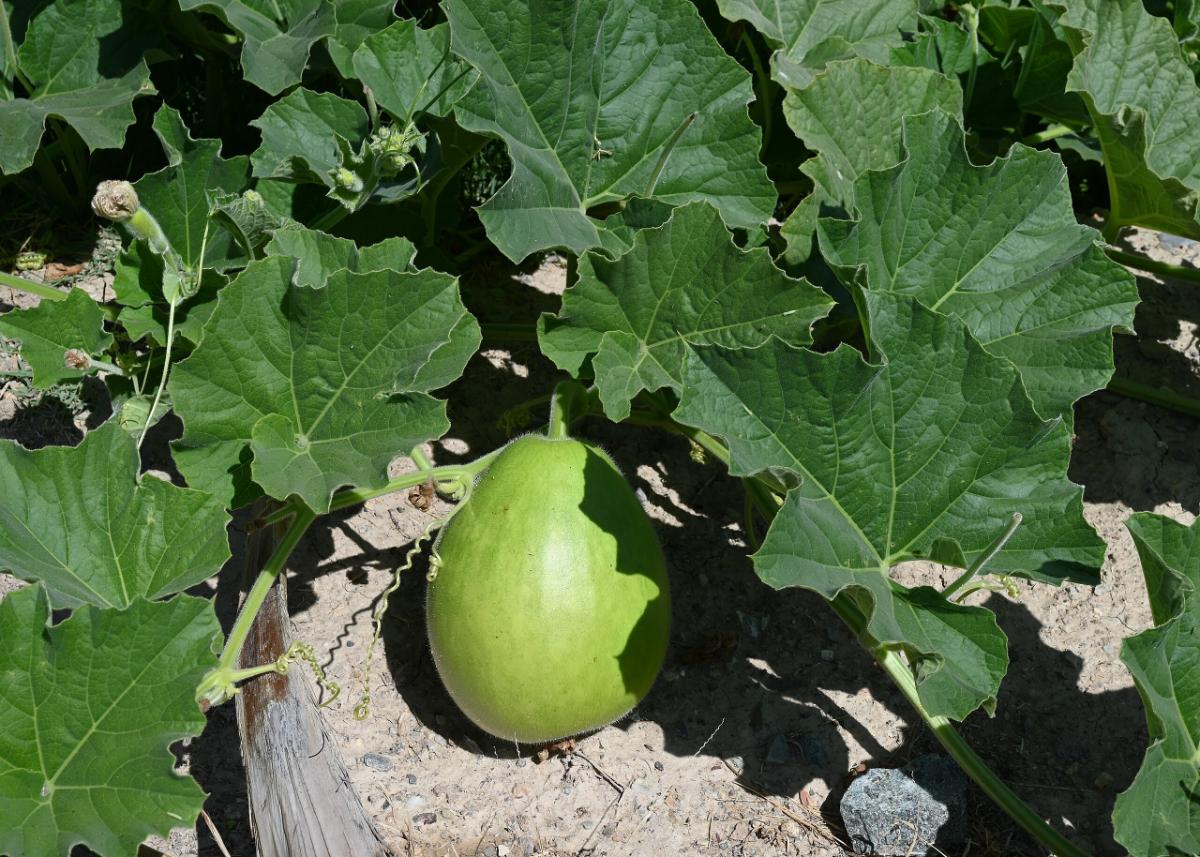
Calabash, snake gourd, or cucuzza, is a type of gourd that comes in a variety of shapes. When left on the stem until frost, the skin will toughen, and then they can be used as birdhouses, calabashes, and other useful things. Some ripen into bottle-shaped gourds, while some look like long green snakes.
However, pick them when they’re still young and tender and they taste like summer squash. Slice them into veggie sticks for a snack, or add chunks of squash to your soup in the last ten minutes of cooking. Cucuzza is delicious when cut up and fried in olive oil. There is some evidence that Cucuzza has lowered blood glucose levels in diabetic test animals.
The vine is highly productive – one plant can feed an army, popping out huge gourds left and right. And the vines are not afflicted by diseases or pests as other squashes are.
Be sure to store the squash in a cool, dry location. If a fruit tastes even a little bitter, throw it out.
11. Jerusalem Artichokes (Helianthus tuberosus)
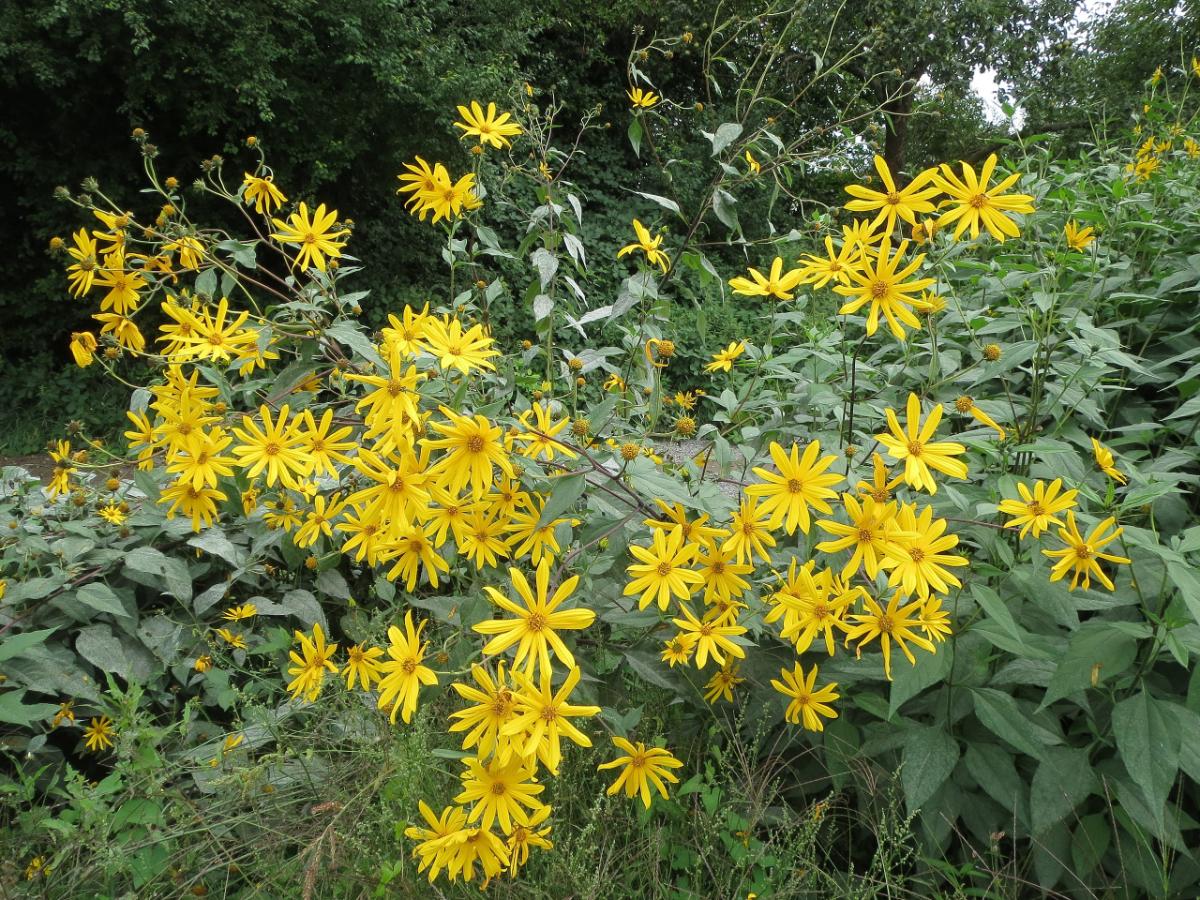
Jerusalem artichokes are super easy to grow. These yellow sunflowers grow tall, topping 8 feet, with leaves and stems that feel like fine sandpaper. They will spread, and one tuber will soon turn into 10. They’re perennials, so any tubers left in the ground will grow back the next year.
Jerusalem artichoke tubers are full of inulin, which is healthy and can possibly lower blood glucose levels. But these will give you terrible gas if you eat a lot of them. Better to eat only a small amount when you first try them, then slowly increase your intake. Start by roasting a few mixed with potatoes and carrots. They are tasty and the plants are prolific.
Note: Don’t grow Jerusalem artichokes in the garden because they can become invasive. Instead, plant them in a place where other edible plants struggle. Cut off the flowers before they go to seed to keep them in bounds. If they do go wild, don’t try to dig them up. They will see this as a challenge and grow even more rampant. Leave them alone and cover them with a tarp and mulch. Eventually, the tubers will grow too thickly, and they’ll choke themselves out.
12. Skirret (Sium sisarum)
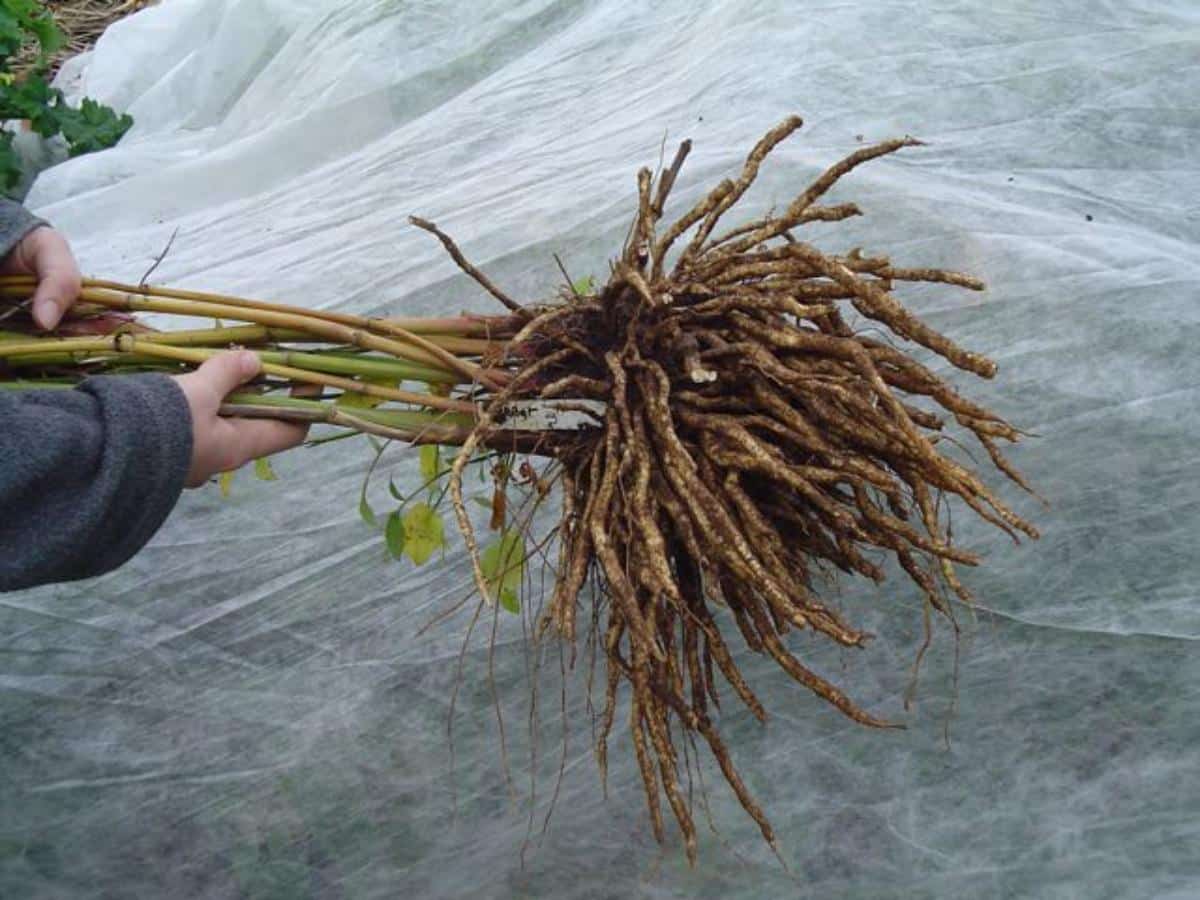
Skirret, aka chervis, is the best-roasted vegetable you’ll probably ever eat. It can be eaten raw, but it is best roasted. Once beloved by kings and emperors, the plant lost favor when the potato replaced it in commerce – but it’s overdue for a revival.
This perennial is super easy to grow. Plant a seed and up pops a plant that grows a thick cluster of roots from the crown. Over time, skirret will form multiple crowns that can be teased apart and planted.
Harvest: In fall, leave the roots in the ground until the frost kills off the above-ground foliage. That’s when the roots will be sweetest. Dig up the clump, snip off the biggest roots, and replant the rest for next year. Scrub the roots, cut them into 2-inch lengths, and roast them with vegetables. Add a little bit of oil and salt.
The immature flower stems can be boiled or steamed and taste much like carrots (which makes sense as the skirret is in the carrot family).
Skirret roots don’t store well, so dig up only what you need and leave the rest attached to the plant to keep growing until next time.
13. Bitter Melon (Momordica charantia)
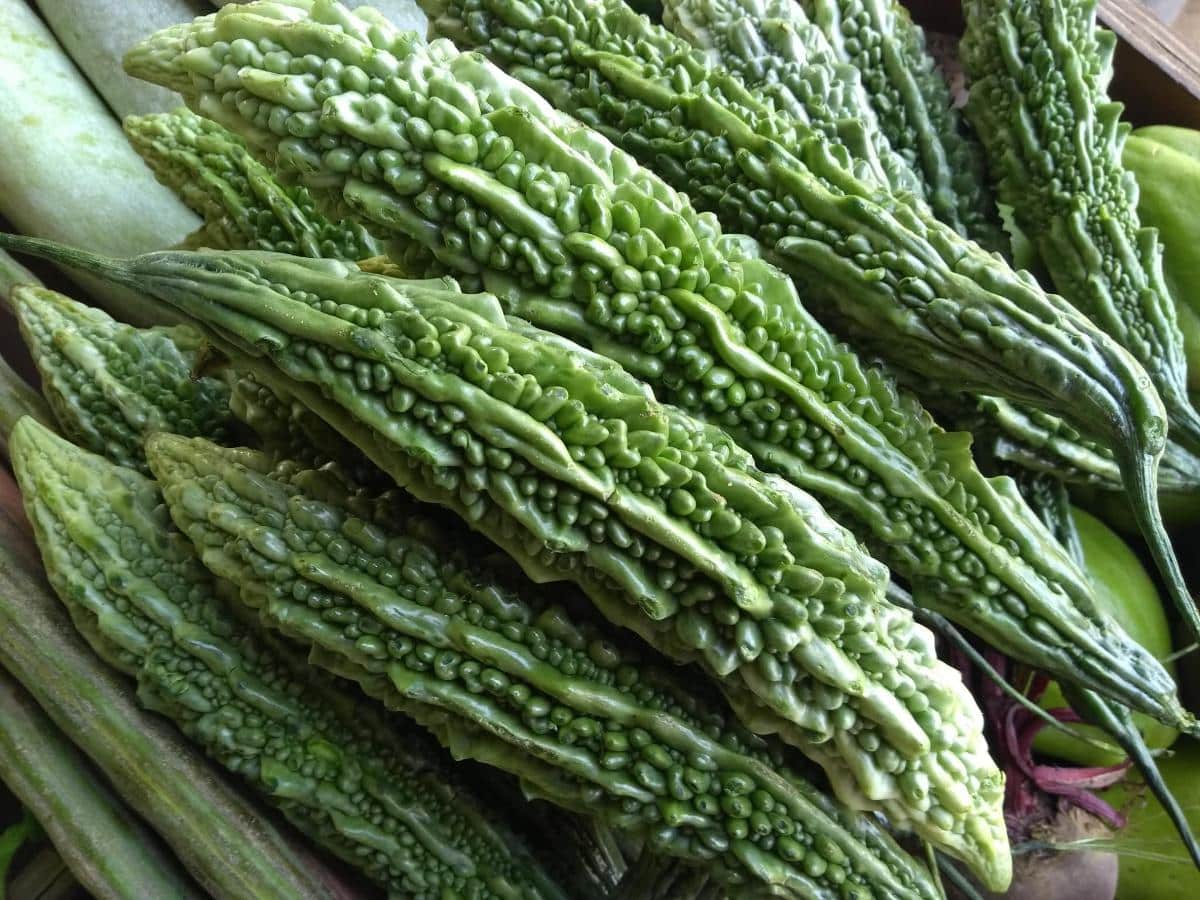
A member of the cucumber family, bitter melon has a fascinating pebbly surface and excellent medicinal properties. Some say it’s the new superfood. It’s used all over Asia across many cultures in an incredible array of tasty dishes and refreshing drinks.
Bitter melon is crunchy and generally eaten when it’s green and just on the cusp of ripening, and its name doesn’t lie: it is bitter. Some say that bitter melons with darker green color are more bitter than pale melons.
Vines will regrow from seeds every year, and they are very low maintenance. Water and fertilize to get really big bitter gourds.
Use bitter gourd to make mung bean soup. Slice it thinly and cook it in scrambled eggs. Add a generous dose of garden salsa to the eggs if you still find it bitter. Or, chop it up into disks and ferment it.
14. Salsify (Tragopogon porrifolius)
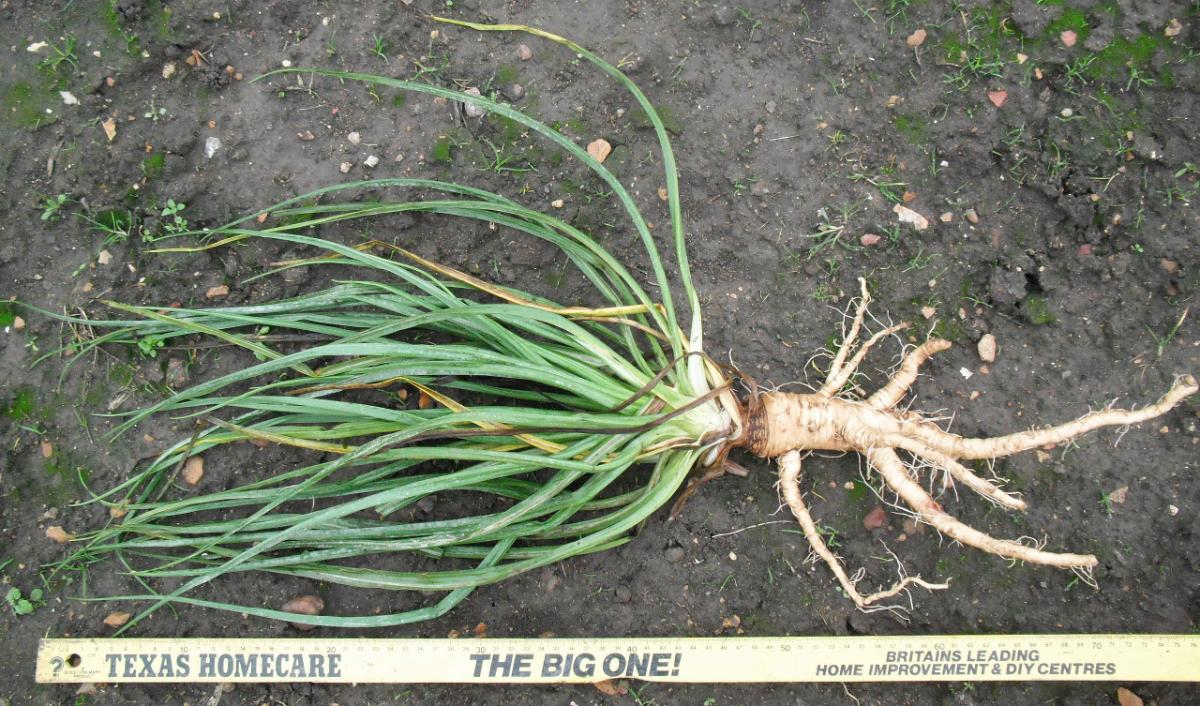
Salsify, aka oyster plant or Jerusalem star, has long white roots that are prepared in ways similar to parsnips. It’s a member of the Aster family and is related to dandelions, so every part of the plant is edible – flowers, leaves, and roots.
Young shoots can be cut for greens, and the flower heads can be battered and fried. The roots taste like oysters. Slice them lengthwise and sauté in butter, or roast them.
In my state, salsify grows wild and is called goatsbeard. What’s funny is that I’ve been able to identify the plant since I was in junior high (not hard, it has a tall yellow flower that turns into a gigantic dandelion puff), but I never realized until today that the roots were good to eat. The more you know…
Read more gardening advice from Rosefiend Cordell.
15. Emerald Carpet Creeping Raspberry (Rubus pentalobus)
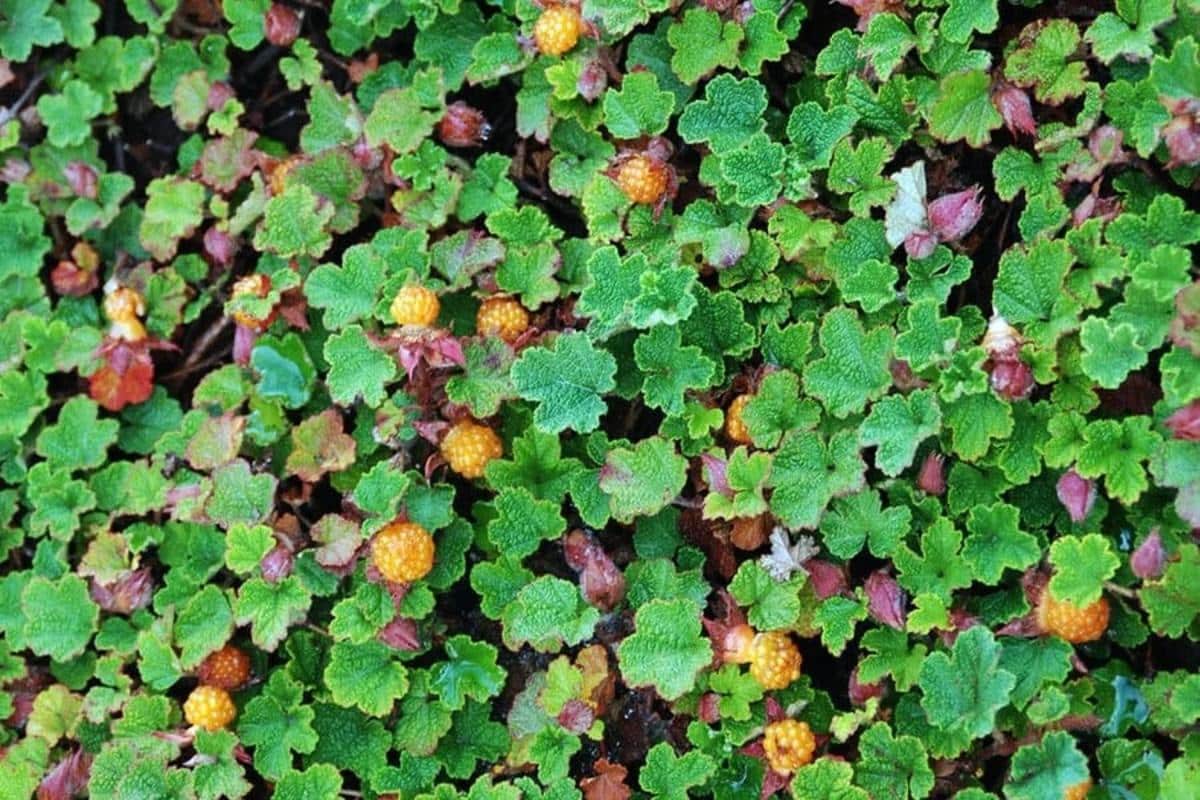
Every time I run across pictures of Emerald Carpet raspberry, I can’t help but think that I’m looking at a geranium or at something from the Malva family. But no. This raspberry, which is native to the alpine forests of Mt. Hehuan in central Taiwan, doesn’t look like a raspberry at all. It grows only 6 to 12 inches tall and goes creeping across the ground. In fall, the leaves turn copper-colored (some say raspberry-colored) and stay evergreen in the winter.
‘Emerald Carpet’ is durable, good for erosion control, and adds great texture to the landscape. Green stems are thornless, while older stems and the backs of their leaves have small thorns that don’t poke you. It enjoys some shade, but the plant needs at least 4 hours of light daily to prosper. One Emerald Carpet raspberry can spread over a 5-foot area in about 3 years.
The orange raspberries appear in summer, and they’re tasty, though the plant isn’t a consistent fruiter. Still, this attractive little groundcover provides beauty and raspberries – what’s not to like?
‘Emerald Carpet’ raspberry can be found at Raintree Nursery. They are currently sold out, but you can have them notify you when they’re back in stock.

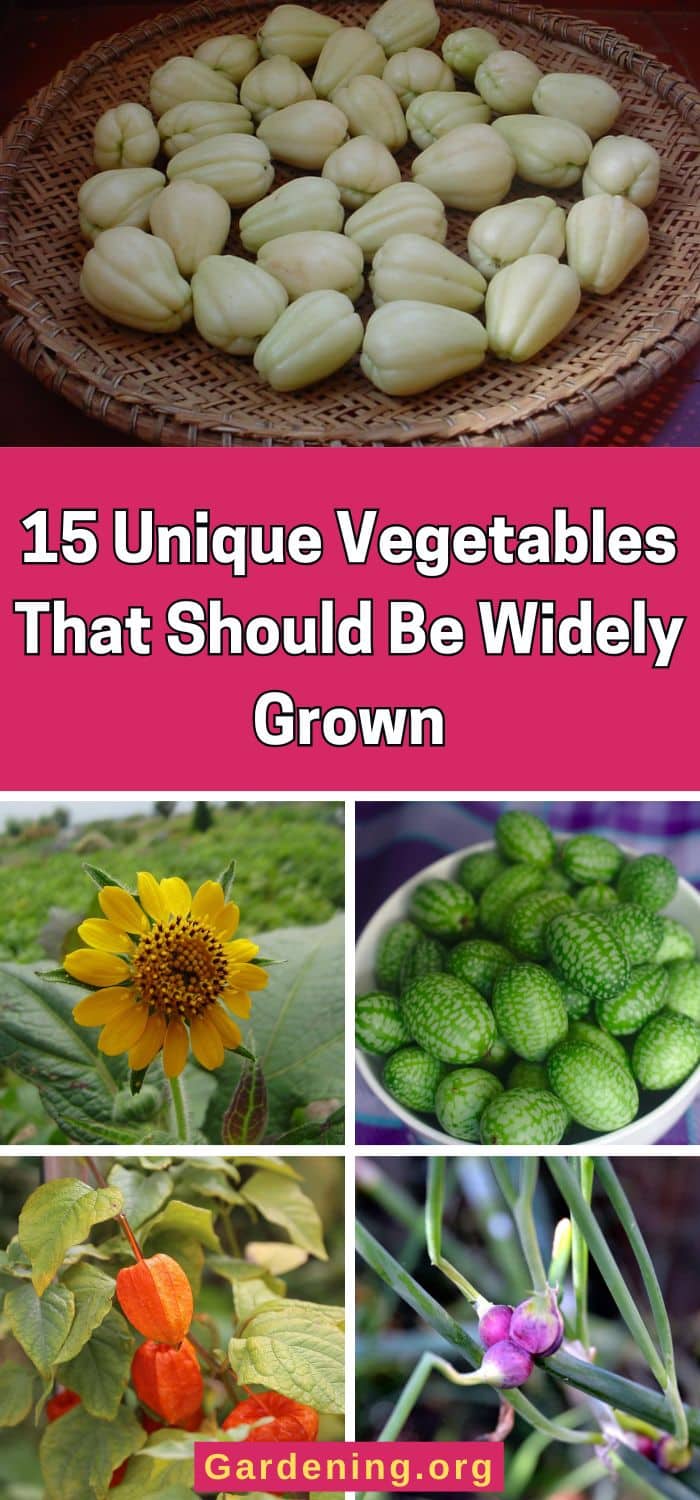
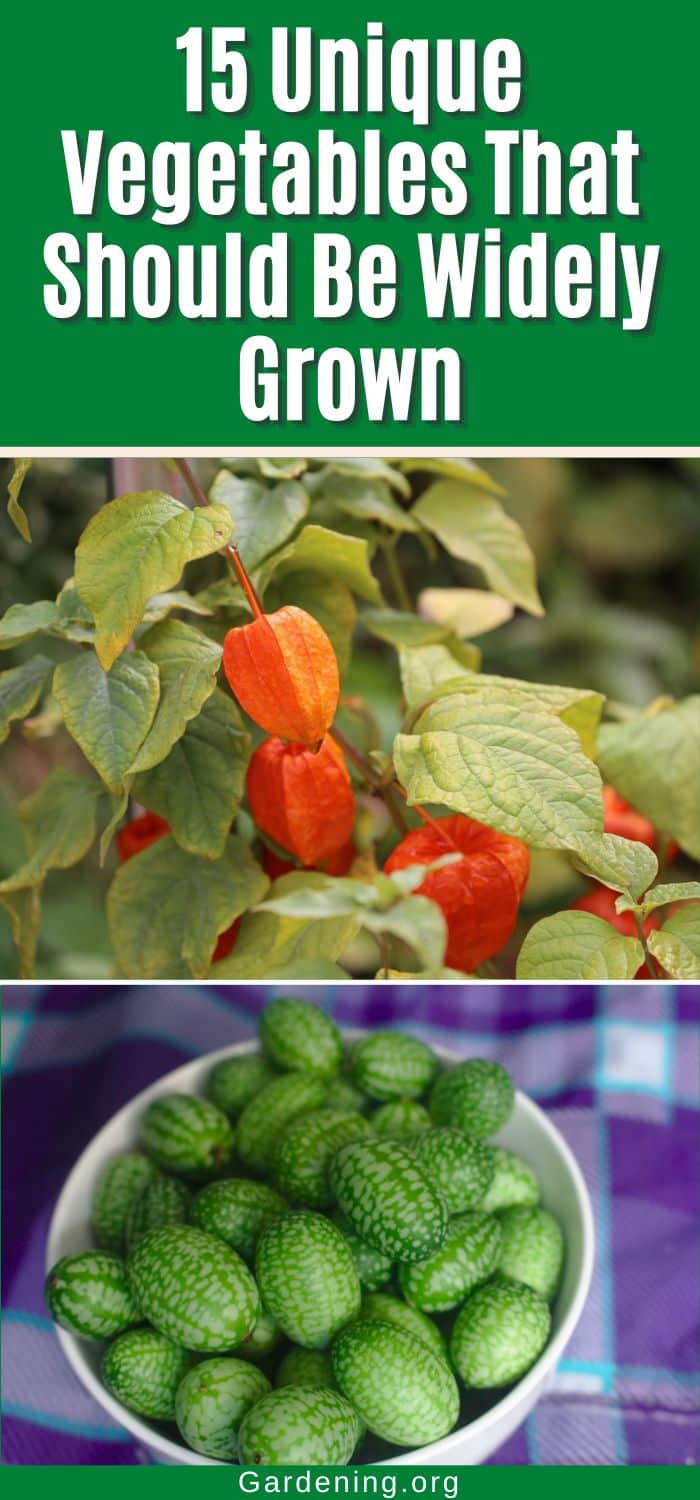
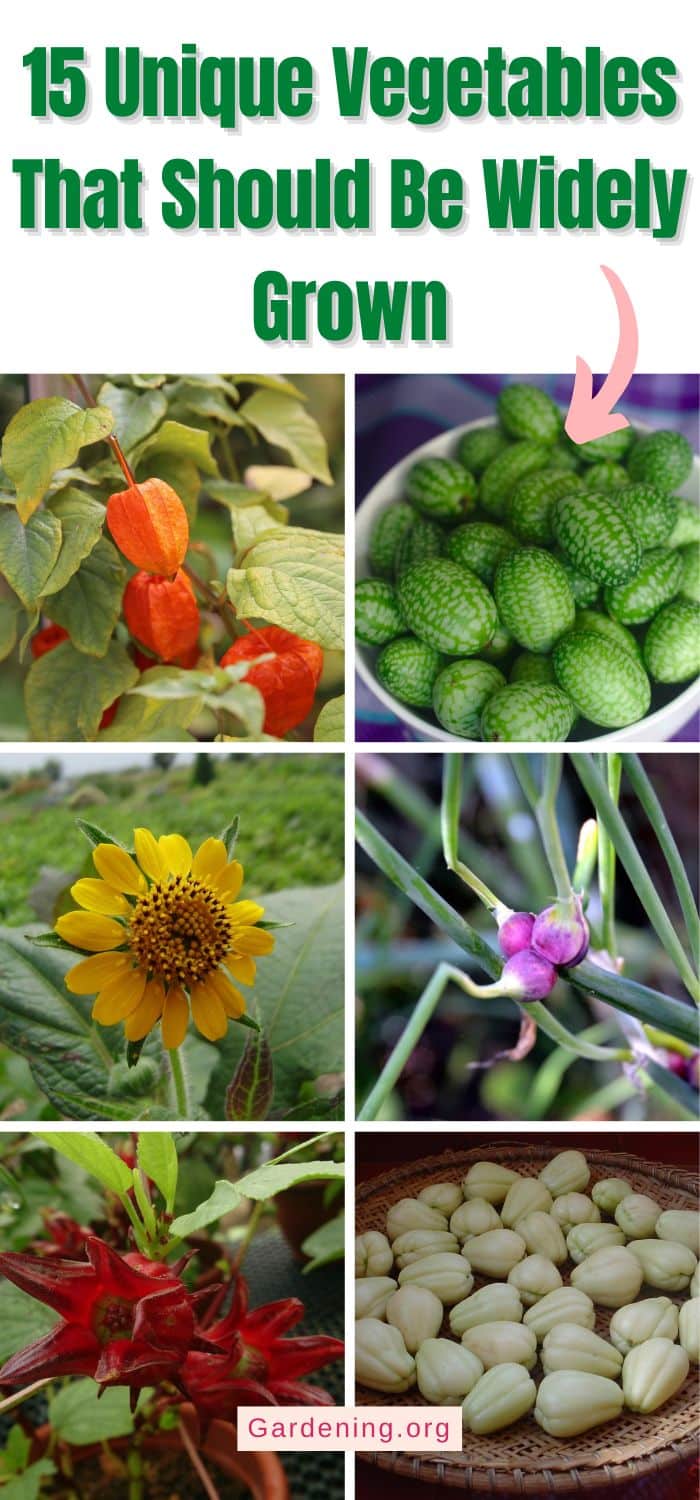
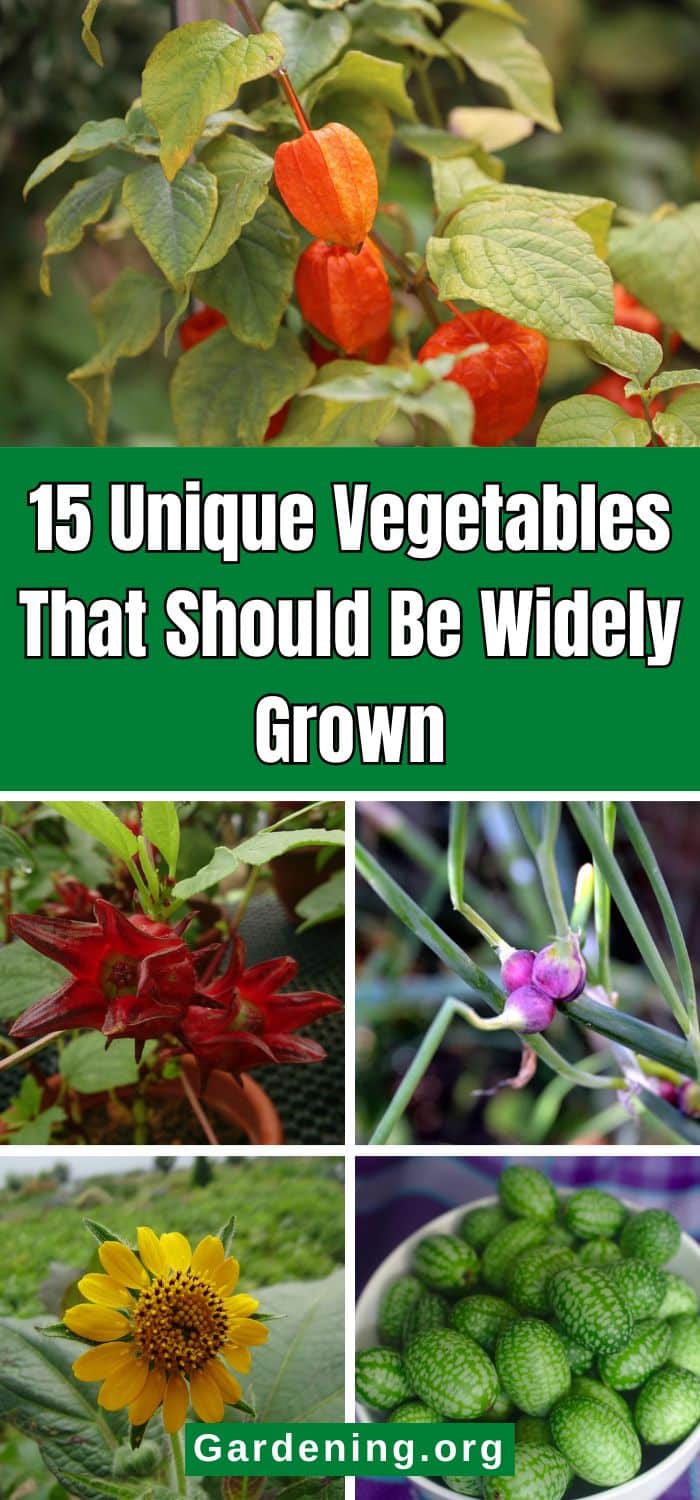
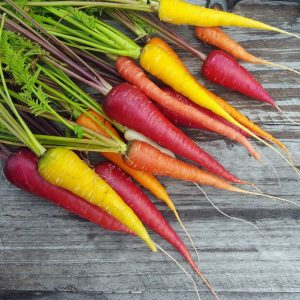

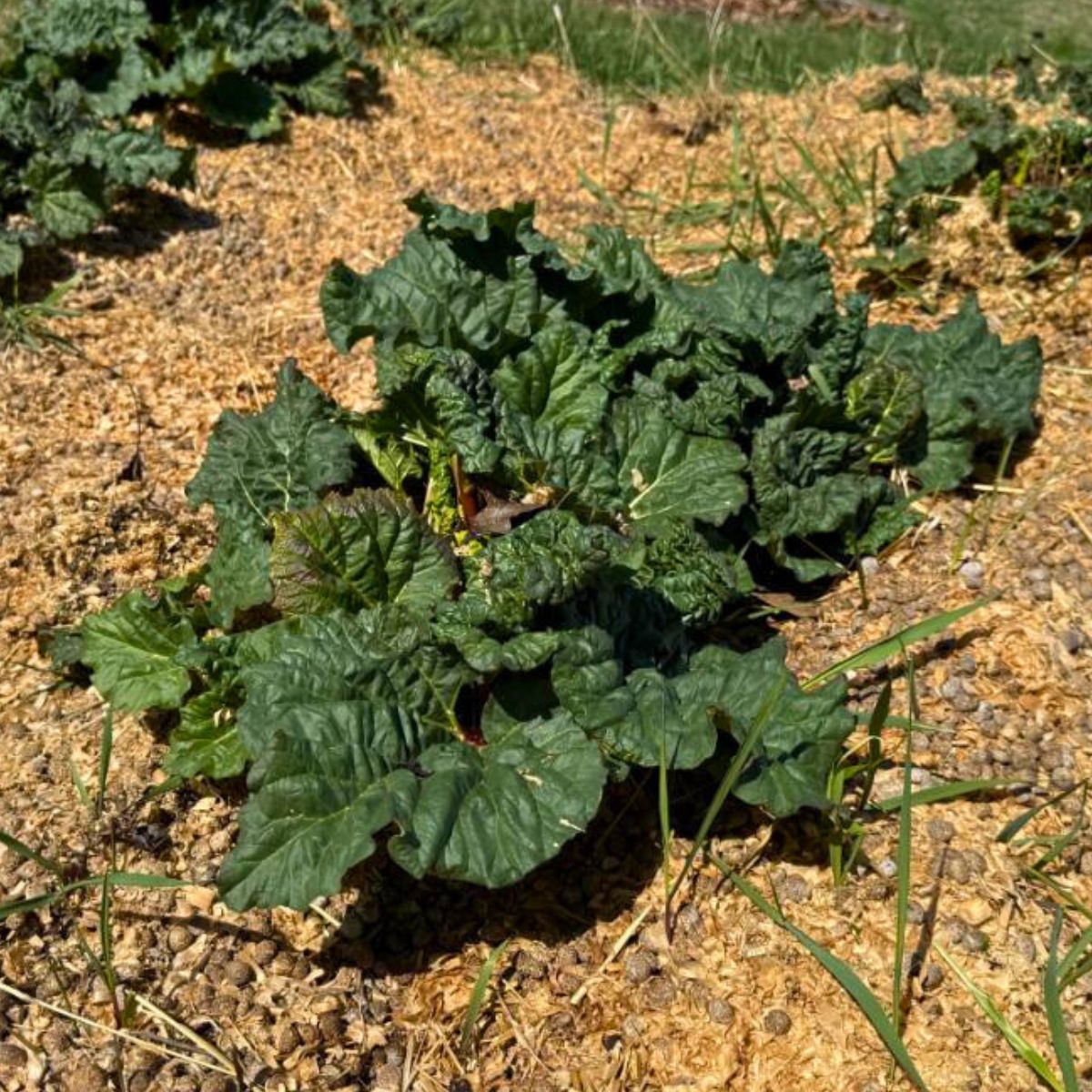
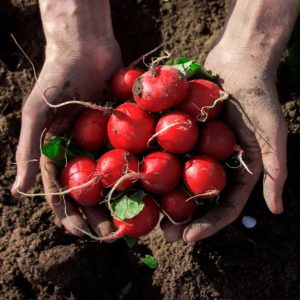
Leave a Reply